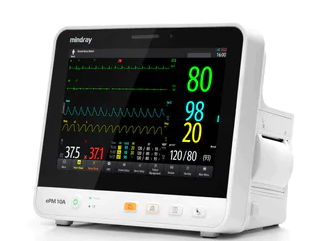Description:
Porter O-Two
EEV-1313
Positive Pressure Resuscitation and On-Demand Oxygen Delivery
Processing Time 6 - 8 Weeks The Porter O-TWO combines two lifesaving technologies – Positive Pressure Resuscitation and On-Demand Oxygen Delivery. Available in quick-connect (compatible with all Porter and Matrx quick connects) or mobile cart options. The positive pressure mode significantly enhances the efficiency and effectiveness of CPR with 100% oxygen. Featuring a strategically located trigger button - activated by the index finger without moving the hand from the mask and allowing a single person response (vs.two with bag valve mask). With a simple 180° turn, the Universal Mask can fit a child as well as an adult. Audible over-pressure alarm to indicate airway blockage combined with back pressure valve prevents over inflation. The demand valve function delivers 100% oxygen to a spontaneously breathing patient with minimal respiratory effort. The oxygen demand flow is controlled by the patient’s inspiratory effort.

